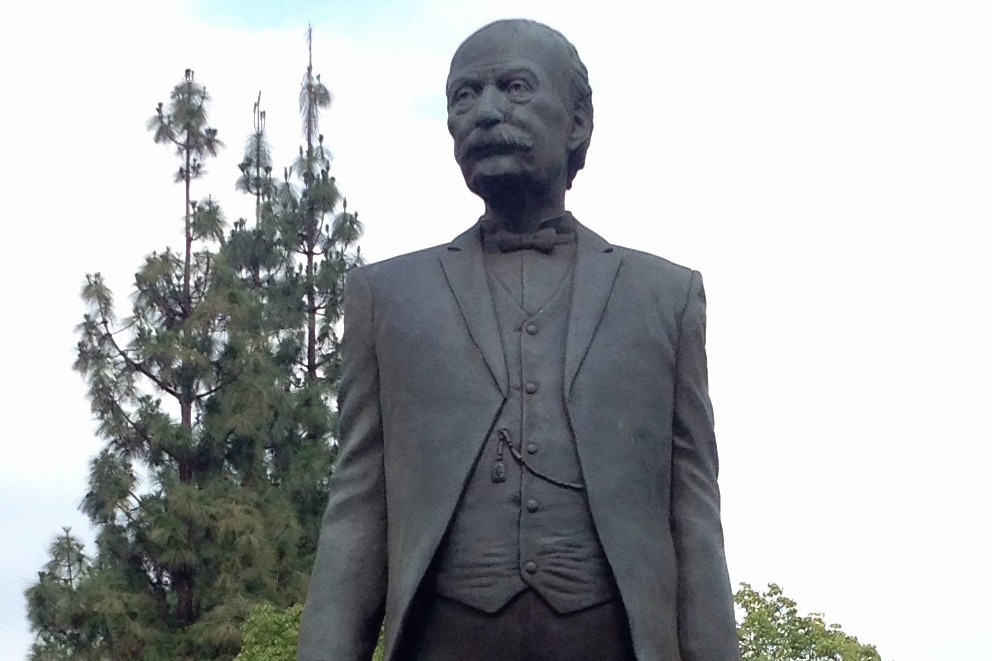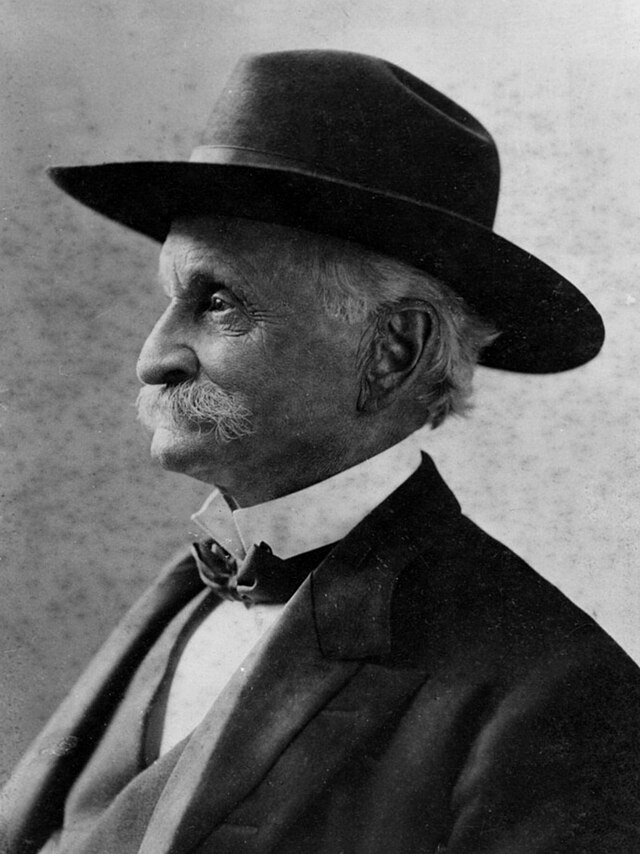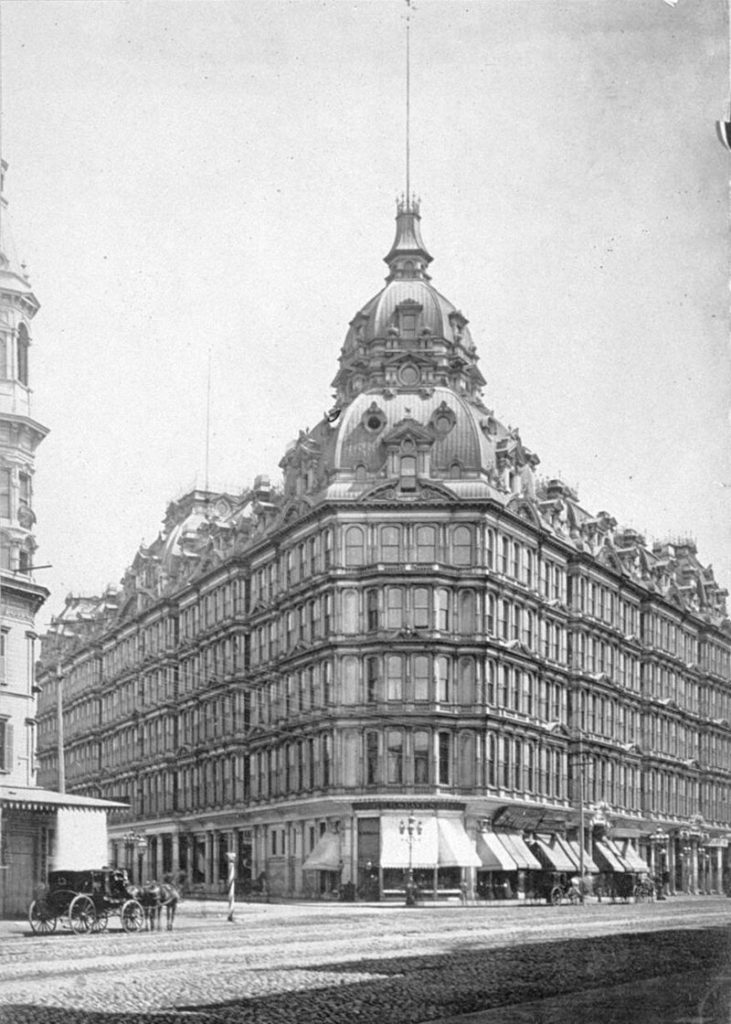Featured image credit: THylbom
Angelenos know the name Baldwin well. You’ll find it plastered all across the cityscape. Baldwin Hills, Baldwin Park, Baldwin Avenue, Baldwin Lake, Lucky Baldwin’s Pub… it’s everywhere. Yet the namesake of these diverse locations is a character few Angelenos could identify today, despite coast-to-coast recognition in his time. Newspapers printed the name of Lucky Baldwin often and eagerly. His gift for a lucrative deal, eccentric lifestyle, and infamous lechery made for good reading. But today, only the historians and the well-read recall his larger-than-life character. After reading this blog, you can decide for yourself whether that’s for the best. In the meantime, we’ll turn a blind eye to morality and instead look at the towering tale of a man who likely owned the land you’re standing upon at a time far removed from present-day Los Angeles, but closer than you’d think.
Sticking the “Luck” to Lucky Baldwin
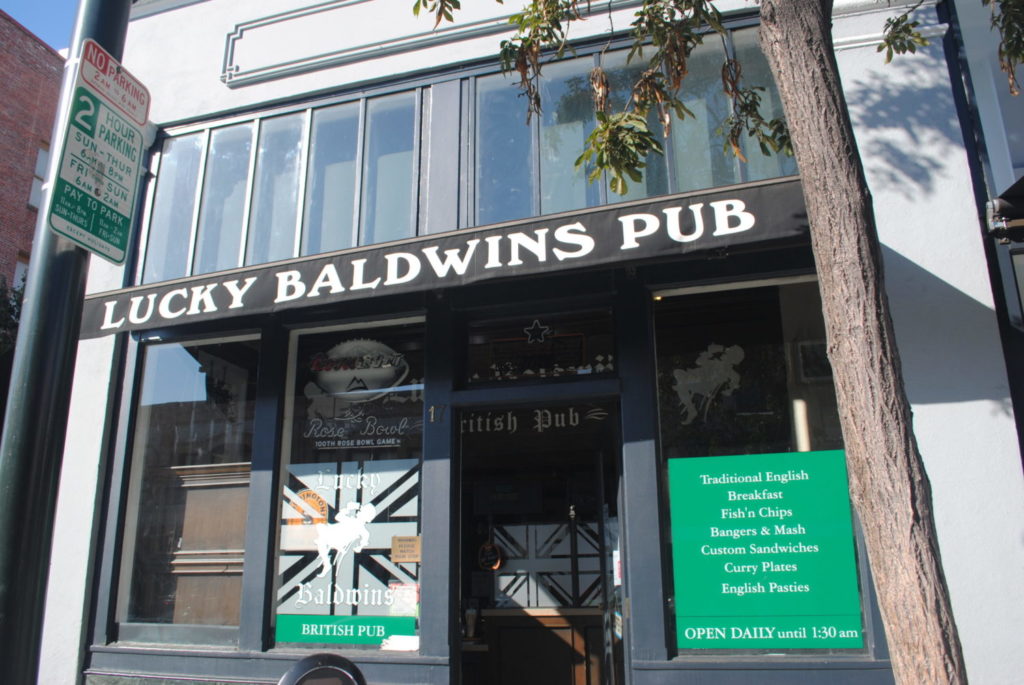
Well before the “Lucky” nickname was pinned to him, Elias Jackson Baldwin was born on April 3, 1828, achieving his first feat of fortune: getting to planet Earth. He wasn’t known as Lucky Baldwin until several decades later when upon returning from a spin around the globe, he was met with the news that stocks he had purchased had quadrupled in value.
“Lucky” likely wouldn’t have been his first choice of sobriquet. He countered that skill and hard work were at the root of his fortunes. After all, his significant wealth had been garnered through a variety of investments and business deals involving real estate, stocks, hotels, and even selling goods such as liquor and tobacco. But luck was easier for the common man to understand. Therefore, the shrewd businessman eventually acquiesced to his fate as Lucky Baldwin.
California Bound
A strength for hard work and perseverance is evident even in Baldwin’s path from Wisconsin to California. Lucky Baldwin was just 25 years old when he loaded his wife and daughter into a covered wagon. Their plan? Set off from Wisconsin into the wild frontier. Of his four-wagon caravan, two were loaded to the brim with tea, tobacco, and brandy, all in high demand in America’s West. He unloaded the bulk of the brandy to Mormons in Salt Lake City at $16 a gallon.
The profits of his tea and tobacco sales were immediately re-invested in horses. They accompanied his caravan through dangerous terrain to Sacramento, where Baldwin promptly sold them at a staggering 400% increase. Whether or not the Sacramentoans complained or not, they paid. With money burning a hole in his pocket, Lucky Baldwin hoofed it down to San Francisco where he purchased a hotel for $5,000. It was just the beginning of his wheelings and dealings in real estate.
The Luck of a Southern California Land Baron
After continuing his real estate success as well as having remarkable…errr, talent with the San Francisco Stock Exchange, Baldwin turned his attention to Southern California. His first land acquisition was 8,000 acres known as Santa Rita Ranch. A notable area historian, Harris Newmark, parted with the land for $200,000. It was quite the entry into Southern California. At the time, it was the biggest land transaction in Los Angeles County history; and the papers weren’t shy about pointing it out.
But not all of Lucky Baldwin’s real estate dealings were so amicable. Take his acquisition of Rancho La Cienega as the perfect example. This land was owned by the Temple Workman Bank which had fallen on hard times. The bank approached Baldwin for a loan to which he happily agreed. There was just one catch. Should the bank be unable to keep pace with the loan, Baldwin would in turn foreclose on all of its land holdings.
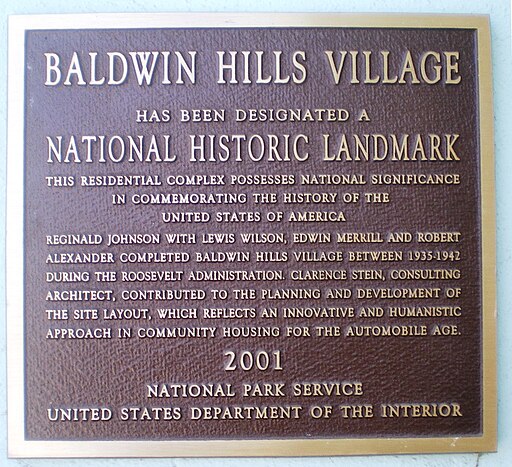
In less than a year, Baldwin was the proud owner of all of the failing bank’s real estate holdings. Unable to see a way forward, William Workman, a co-owner of the bank, committed suicide. It’s hard to view a bank as the David to a Lucky Baldwin Goliath, but Baldwin’s terms were brutally difficult to meet. Yet, deals like the Temple Workman land acquisition that netted the millionaire his coveted Rancho La Cienega property set the tone for his arrival in Southern California.
The Spoils of Business
Baldwin had a particular fascination with Rancho La Cienega, a bountiful yet simple land primarily reserved for sheep grazing. Had that been the only property he’d pulled out of the path of Temple Workman Bank’s hulking collapse, it might not be worth the mention. But the loss of land that convinced William Workman he could no longer go onward included the land that we recognize today as:
- Arcadia
- Baldwin Park (majority)
- Bassett
- El Monte (partial)
- La Puente
- Monrovia
- Montebello (partial)
- Monterey Park (partial)
- Sierra Madre
- South El Monte (partial)
- South San Gabriel (partial)
- Temple City
- West Covina
The 40,000 acres netted in the tragic deal officially made Lucky Baldwin the wealthiest landowner in Southern California.
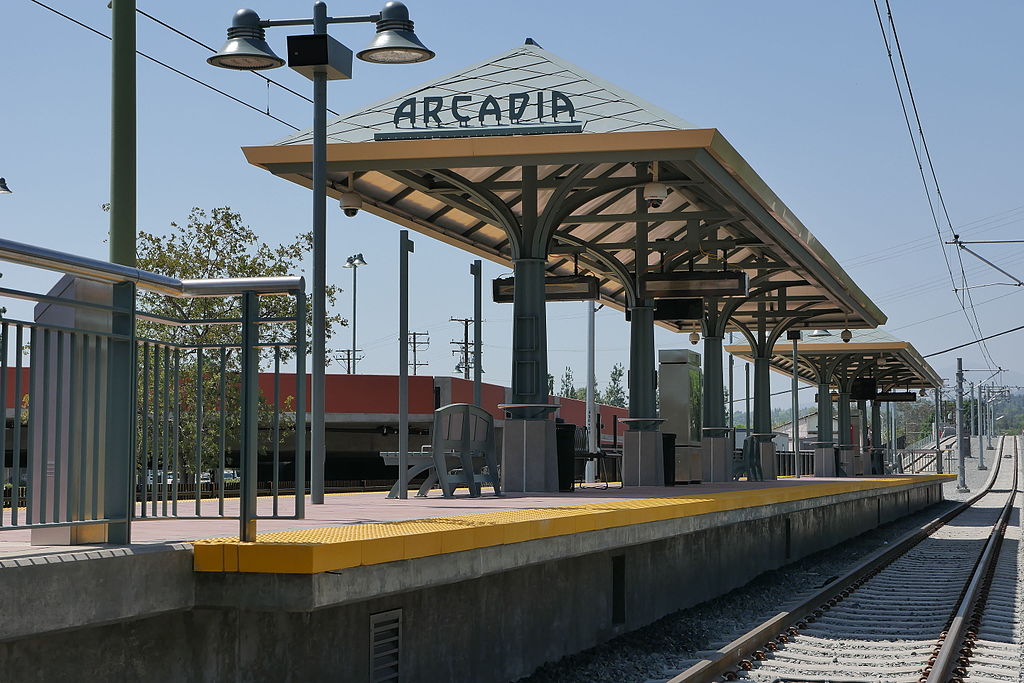
The Amorous Lucky Baldwin
While Lucky Baldwin exercised a peerless level of control when it came to sealing land deals, he was weak to vices in pretty much every other aspect of life. This was perhaps most evident in his dealings with young women. A series of highly publicized marriages was not enough to quell his lascivious behavior, a prime contributor to his nationally acknowledged infamy.
The intrepid woman who joined Baldwin on his wagon ride through the frontier? Divorced. His next wife? Divorced. Next, he married 16-year-old Jennie Dexter. The marriage lasted seven years before she succumbed to tuberculosis. Baldwin then married 16-year-old Lillie Bennett who was said to bear a striking resemblance to the late Jennie Dexter. And though Baldwin and Dexter never officially divorced, their union only lasted two years before they separated.
Get Lucky or Die Trying
Baldwin paid no mind to the practice of underpromising and over-delivering during his later gallivanting years. No less than four women sued him for breaking supposed wedding engagements. Baldwin’s reputation preceded him. The country as a whole knew him as a womanizer at best, and at worst… well, at least one of his accusers clarified that Baldwin had raped her. On a few occasions, these abuses nearly cost Baldwin his life.
In 1883, the millionaire was shot in his own hotel by one of the women who had accused him of breach of promise. Again, he felt the pull of the reaper in a San Francisco courtroom in 1896. While his accuser was on the witness stand, her sister approached Baldwin from behind with a pistol, but only managed to graze his skull. It seemed with each impropriety, indiscretion, and abuse, Lucky Baldwin just settled further into his nickname.
The Dawn of Arcadia
Visit the lush landscapes of The Arboretum in Arcadia and you’re bound to marvel at the living traces of the last grand station on Baldwin’s tour of fortune and power. The peacocks of Arcadia are the direct descendants of an ostentation that Baldwin brought back with him from a trip to India. The final feather in the millionaire’s cumbersome cap wasn’t emblazoned with the Baldwin name like so many other souvenirs from his time in Southern California. But the Arcadia we know today couldn’t be more removed from Baldwin’s original vision.
To be fair, Lucky Baldwin tried and failed to create a town called Baldwin before he moved on to the idea of Arcadia. It was little more than a name, a concept, and undeveloped ranch land until the Pacific Electric Railway publicized plans to develop a route between Pasadena and Monrovia. With Arcadia smack dab in the middle, maybe Baldwin should have named his town Lucky.
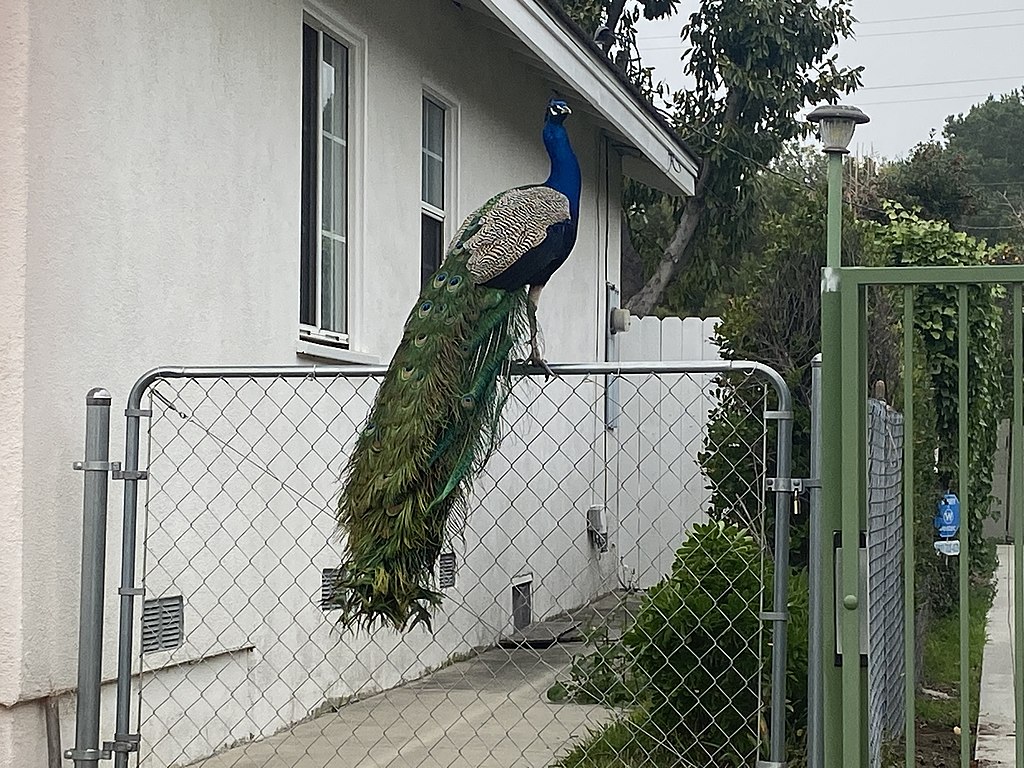
In 1903, the aging tycoon officially petitioned for the incorporation of Arcadia. It was a move that deeply alarmed his various adversaries. An organization known as the Anti-Saloon League spearheaded efforts to thwart Baldwin, believing his Arcadia would be a Babylonian wasteland of free-flowing liquor, gambling, and debauchery.
Lucky Baldwin’s Pre-Sin City Pleasure Island
When the county was given the right to decide whether Arcadia would be incorporated as a municipality, Baldwin wasn’t content to rely on his trademark luck. The vote passed but it was later revealed that over 75 percent of the election participants were employees, relatives, or otherwise directly affiliated with Baldwin.
At the outset, Baldwin had vowed to county supervisors that Arcadia would not be a town of vice. But with no more legitimate obstacles between him and Arcadia, Lucky Baldwin set to work establishing his own spin on an adult Pleasure Island. Among Arcadia’s first ordinances? Liquor licensing. And Arcadia’s very first liquor license was granted to Baldwin’s daughter.
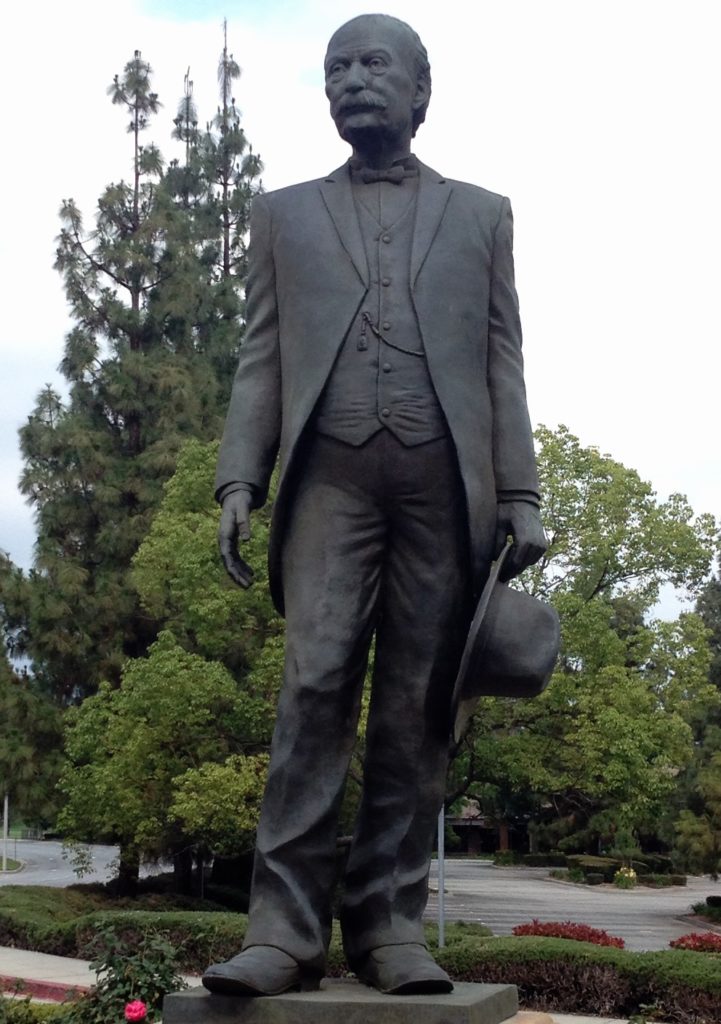
With booze sufficiently flowing, it was now time for Baldwin to turn his attention to another of his passions: gambling. In 1907, he welcomed Arcadia’s public to Santa Anita Park, Arcadia’s premier venue for horse racing. Undoubtedly, a good number of people turned their nose up to the affair. Some of them were likely even among the over 7,000 patrons who crowded the venue on its opening day, queueing up at the one-armed bandits, poker tables, and boxing ring. And some may have even sought refreshments in the oasis of Baldwin brand wines and brandies available at the bars.
Lucky Baldwin’s Luck Runs Out
Lucky Baldwin was well on his way to beating Las Vegas to the punch. After all, Arcadia was Sin City before Sin City. But then Lucky’s luck, or at least his life, ran out. In 1909, he succumbed to pneumonia. His heirs sold off his legacy piece by piece, creating notable patches of the Los Angeles quilt work we enjoy today. These days, Baldwin’s larger-than-life personality and, potentially, his crimes are so far removed that we hardly give the name Baldwin a second thought. Yet, good portions of this city were built on Baldwin… for better or worse.

